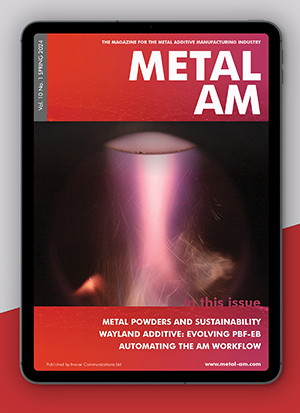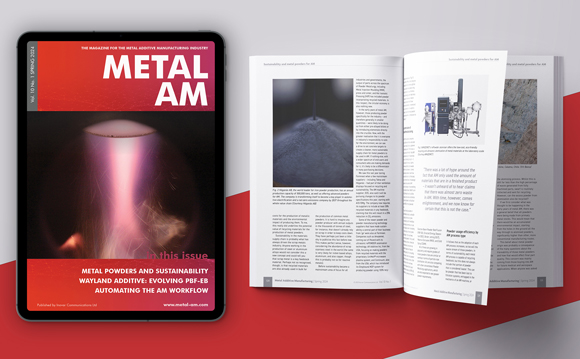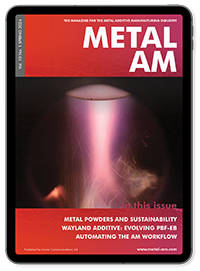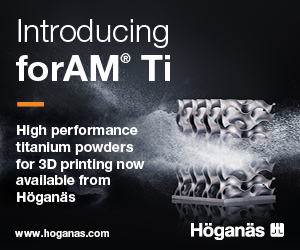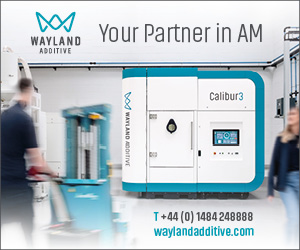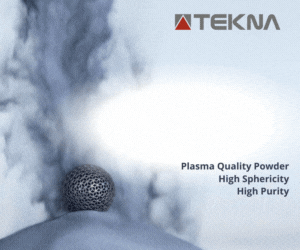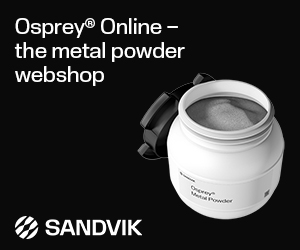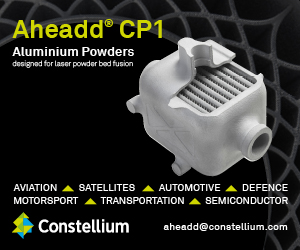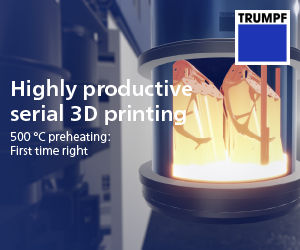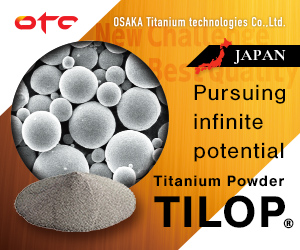PyroGenesis granted US patent for NexGen powder
January 22, 2024
PyroGenesis Canada Inc., Montreal, Quebec, Canada, has announced that the United States Patent and Trademark Office (USPTO) has issued a new US Patent No. US 11839918 encompassing the company’s NexGen plasma atomisation powder.
This US Patent – ‘Method and Apparatus for Producing High Purity Spherical Metallic Powders at High Production Rates From One or Two Wires’ – describes the company’s NexGen plasma atomisation technology for producing metal powder for use in Additive Manufacturing. The patent describes the features of the NexGen machine, which can potentially lead to higher and more efficient production rates. One such feature is the use of a two-wire simultaneous feedstock approach where the wires are electrically charged before reaching the plasma atomisation step.
Pierre Carabin, PyroGenesis’ Chief Technology Officer and Chief Strategist, and the co-inventor of the technology, shared, “The NexGen process is a significant departure from conventional plasma atomisation, as the improved efficiency from NexGen not only targets higher production rates, but also narrower particle size distribution for more uniformity and consistency, and an ability to tailor particle size distribution (PSD) to customer requirements.
“For PyroGenesis, that means producing more powder in a single system and with only a single plasma torch – in accordance with our commodity security and optimisation business strategy. For our customers, that means they receive the finest, most spherically-consistent, and densest powders from typical plasma atomisation, but with the added benefits of buying from a North American-based source that offers higher yield and less waste of a recognised critical mineral, while also being more energy efficient – helping them to reduce their carbon footprint and meet their Scope 3 emissions targets,” continued Carabin.
Plasma atomisation, which involves feeding a single wire through a plasma torch or using three plasma torches to aim at a centrally-positioned wire, has a significant drawback in terms of production rate in comparison to water and gas atomisation, due to the fact that plasma atomisation is a very energetically inefficient process.
To combat this, PyroGenesis Additive’s NextGen machine feeds two separate spools of metal wire, such as titanium. These wires are first electrically charged, which creates an electrical arc that melts them. The melted wire is then atomised into powder particles using a supersonic plasma stream from a plasma torch. This results in a more efficient atomisation of the metal, increasing production output.
“Plasma atomisation is considered the gold standard for the production of Additive Manufacturing powder,” stated Massimo Dattilo, Vice President of PyroGenesis Additive. “PyroGenesis not only invented the process, but coined the name, which is now widely used in the industry. Because of our dedication to continuous improvement, when we decided to re-enter the market, we did so with a mandate to advance plasma atomisation to the next level through a redesigned system we named NexGen. The confirmation of this US patent for NexGen is a key validation of our approach and another major box checked in our market re-entry progress.”
The company has patents pending in Canada and other global jurisdictions for the same NexGen plasma atomisation process.
“The substantially improved efficiency of NexGen, which has shifted the particle size distribution of our production runs, means the larger average amount of finer cut powder we can produce per run also includes fine powders in the 5–20μm range suitable for use in Binder Jetting and Metal Injection Moulding (MIM). We see MIM – in addition to the fine powders we can offer for laser bed applications – as a key market ahead, as more companies especially in consumer electronics continue to move from stainless steel to titanium to achieve weight and corrosion reduction,” added Dattilo.
After several years of R&D, the company recently announced full commercialisation and whole entrance into the titanium metal powders marketplace with its first by-the-tonne commercial order, and the company’s journey to create NextGen was the topic of a recent a cover story of Powder Metallurgy Review.
“With a goal to produce the highest quality metal powders in the Additive Manufacturing industry, PyroGenesis Additive has taken a cautious, methodical approach over the past few years as we designed, then readied, our new NexGen plasma atomisation process,” said P Peter Pascali, president and CEO PyroGenesis Canada Inc. “With full commercialisation achieved, and now with the US patent confirmed for our technology, we look forward with great optimism regarding our future, with an ever-widening range of metal powder offerings becoming available to the Additive Manufacturing industry.”
The company has developed high-quality titanium metal powders as a part of its three-tiered solution ecosystem, which is aligned with economic drivers that are key to global heavy industry. The metal powders fall under the company’s Commodity Security & Optimization tier, where the recovery of viable metals and the optimisation of production to increase output, help maximise raw materials and improve the availability of critical minerals. The Canadian government, and many other governments worldwide, have identified titanium as a critical mineral.
Download Metal AM magazine
